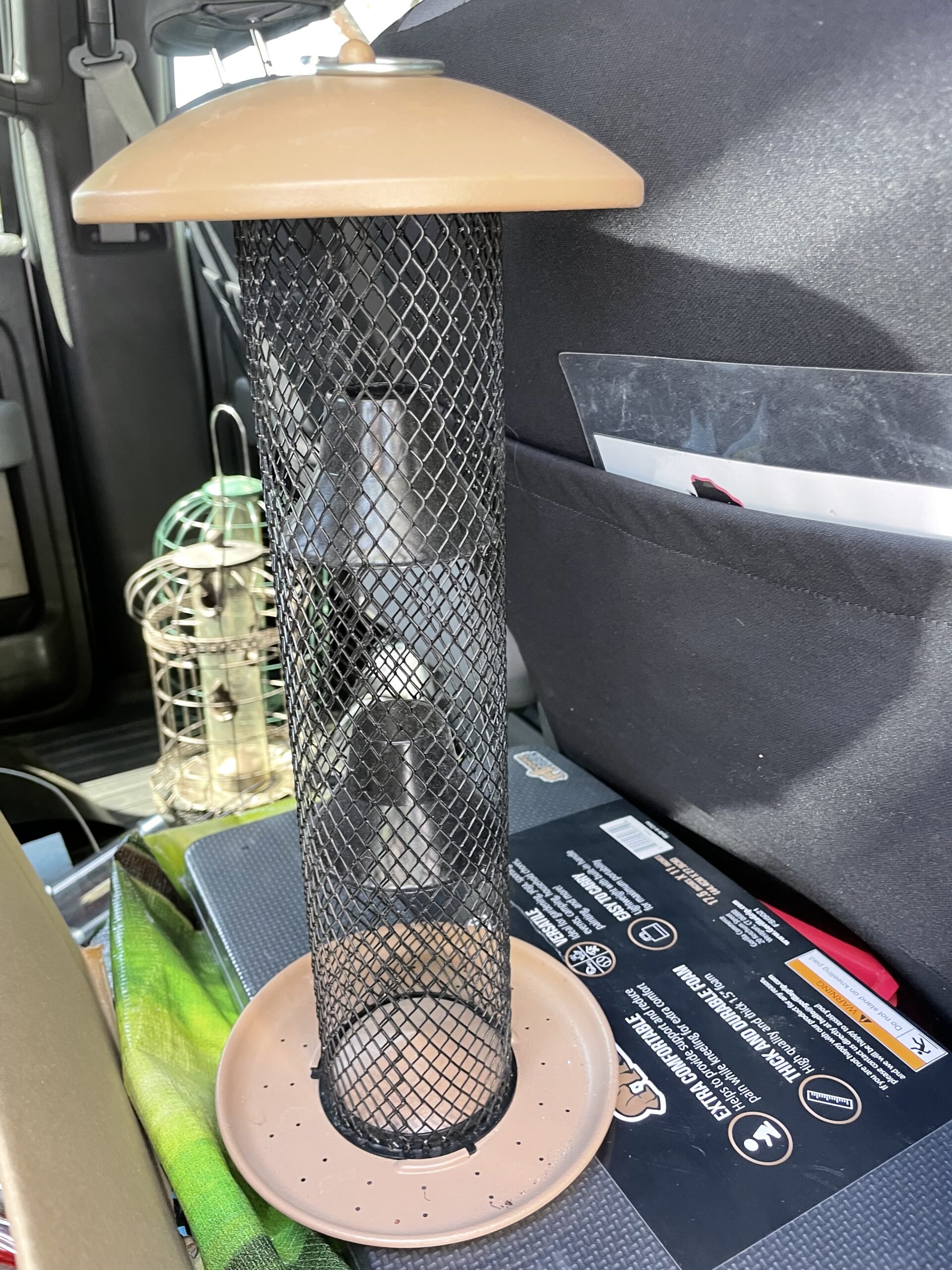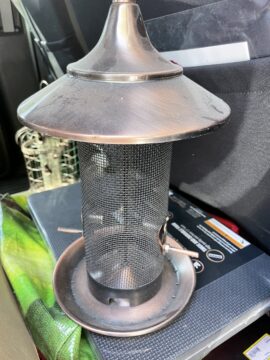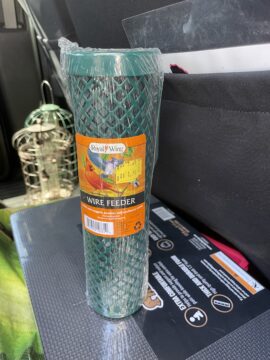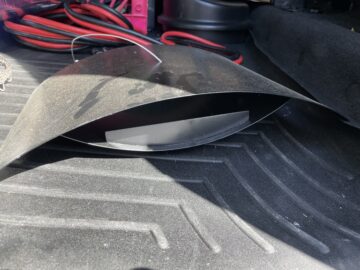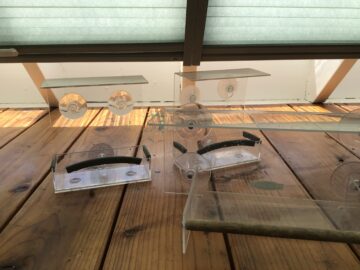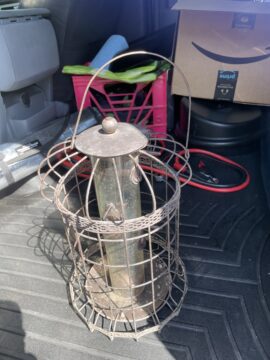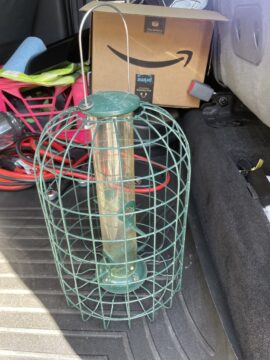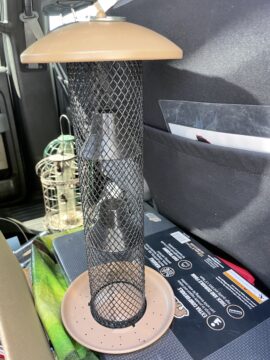As mentioned two posts (and months) ago, about half the bird feeders on the market are poor quality and/or unsafe for use.
1. Cheap plastic is best to be avoided, and seeming lovely metal feeders often end up being super-fiddly to get fully apart to adequately clean and should be avoided as well.
2. Feeders with more than two or three screws holding them together are annoying and you won’t want to clean them because of the effort involved, which means seeds will sprout and stuff will start growing inside the tubes, and the chances of contagious diseases being spread are increased.
3. It’s also best to avoid anything with little levers that birds’ feet can get wedged into. Bird feeders like these are meant to work with the slight weight of a songbird and deny squirrels a chance to score a meal, and are best left on the shelf.
4. Also, try to avoid things that spin. Sure, those videos of squirrels getting zipped around and flung from a feeder are funny, but tell that to the many squirrels who have died of broken legs, backs and necks. Seriously, if you want to keep squirrels off a bird feeder meant for songbirds, put up a secondary offering of just nuts and you will not only solve your problem, but get to watch squirrels being squirrels.
That said, here are a variety of feeders we have tried and why they’re not good for use here. Some of them are very well made and great feeders; they just don’t work here because of the landscape and weather.
First on the meh list: Plastic window feeders. Why? Because our Mourning Doves and finches love to sit in them and poop in the seed. Other birds then do the same, and before you know it, you have a finch with pus-filled warts on its beak and eyes. Even cleaning these feeders every time they were refilled didn’t reduce the chances of spreading diseases enough, so we gave up on them.
Also on the meh list: any variety with lots and lots of screws that must be removed in order to be cleaned properly. Being super-fiddly to take apart and put back together means it takes quite a while to clean them thoroughly. The chance of losing a screw is also a thing.
Second on the list are feeders that swing about wildly in the wind. There are some lovely feeders on the market, i.e. platform styles or those funky mosaic-covered feeders in shapes of stars or crescent moons, but up here in the winter months we have storms with punishing winds, and heavy feeders swing about dangerously and can get blown clean off their hooks and break themselves and/or something else.
Next up: feeders that are exceptionally large. I know a photo of 30 or 40 finches gorging themselves on one of those 36″ nyjer tubes looks great, but in reality the feeder will not stay perpetually full, and even if you get two dozen finches eating from it at one time, soon enough all the activity will be in the bottom section of the feeder. And if you don’t have a large population of finches, the chances of the seed going moldy and stale are quite high. Stick with normal-sized feeders; while you may have to refill them more often, they’re a lot easier to clean. (There’s also the same potential problem in windy weather as the heavy feeders mentioned above.)
Two small types of feeders that don’t work well here both use small plastic or glass dishes and either hang from a hook or tree branch, or rest atop an slim stake that goes into the ground. The hanging ones are too light if the dishes are plastic, as even just a mild breeze can cause the dish to be popped from its holder. The stake type is of no use either as our clay soil expands and contracts on a regular basis depending on the moisture content, so the simple stakes end up listing and even falling over.
And a quick side note: instead of rehoming the stake feeders, I took the glass dishes off them and, using some spare bits of metal, crafted a homemade version of my favorite jam feeder:
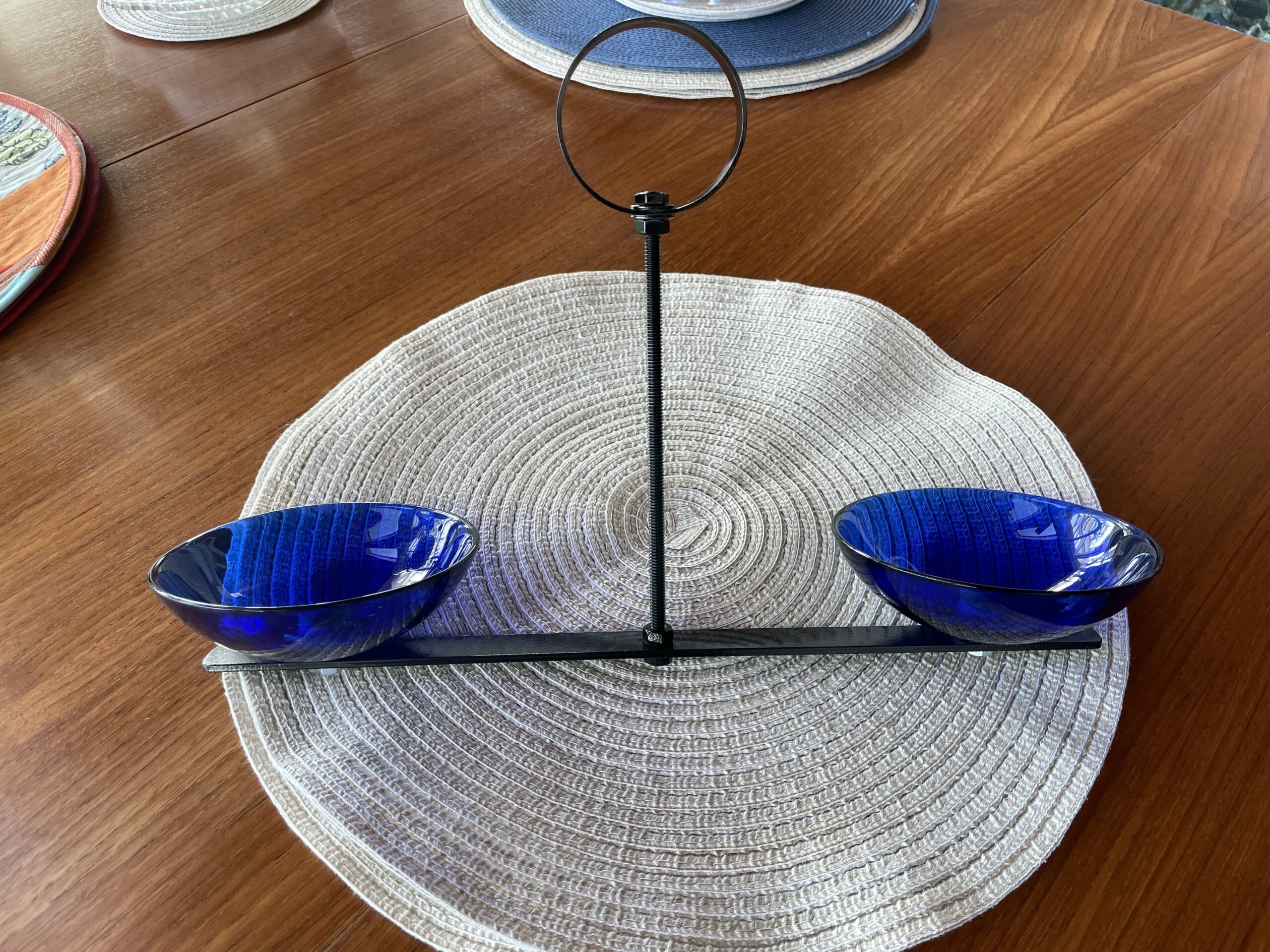
Finally, the MOST IMPORTANT thing to mention: a while back we moved to using seed that has already been hulled or shelled, mainly sunflower and safflower seeds. This means feeders with large openings for sunflower seeds still in the shell are not so useful here. (The advantage of hulled seed is a lot less mess to tidy up, although we still have to deal with raking up peanut shells.) We also switched to high-quality seed–gone are the days of buying huge bags of seed from Tractor Supply (although their stuff isn’t awful, just more middle-of-the-road quality-wise). Instead we buy from a semi-local brick-and-mortar store down in Los Gatos. (If you live in the Bay Area be sure to check Los Gatos Birdwatcher!)

